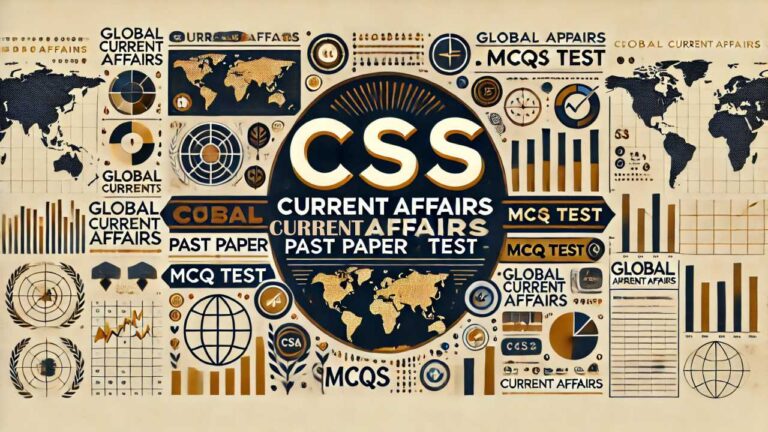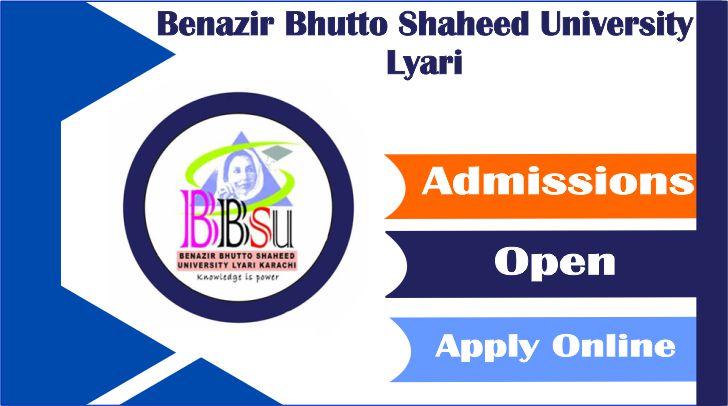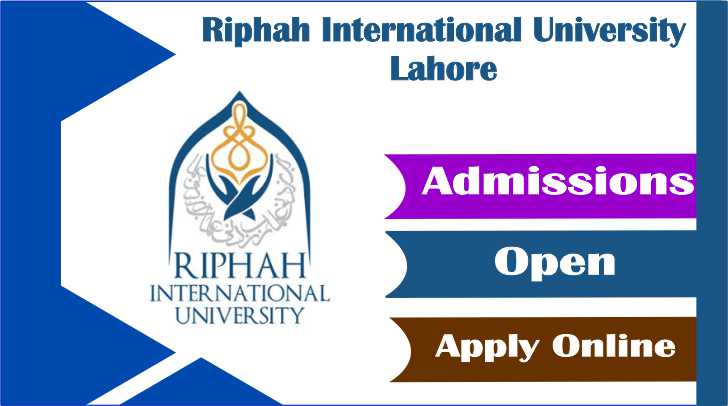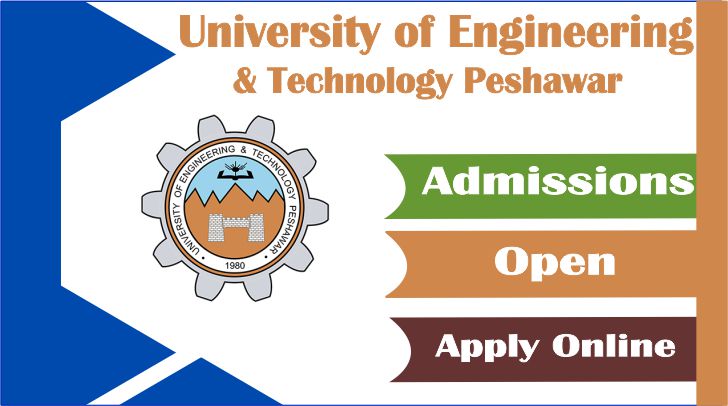Pakistani Perspectives of Gender Studies 9163 Code Solved Quiz (Free)
If you’re preparing for the AIOU course Pakistani Perspectives of Gender Studies (Code 9163), you’re in the right place. We have compiled solved quizzes to help you better understand key concepts and boost your preparation. These quizzes are based on past papers and updated according to the latest AIOU guidelines. Visit our website mrpakistani.com for complete access to the 9163 code solved quizzes and more educational resources. You can also watch detailed video explanations on our official YouTube channel Asif Brain Academy, where we break down each question for easy understanding.
9163
Pakistani Perspectives of Gender Studies Solved Quiz1. How does access to fertility education benefit urban working women?
a. It reduces their participation in the workforce
b. It focuses solely on increasing birth rates
c. It enables informed decision-making regarding family planning
d. It restricts their career choices
Explanation: Fertility education empowers urban working women to make informed choices
about family planning, which supports both personal and professional goals.
2. What role do employers play in supporting fertility education and women’s employment?
a. They should prioritize male employees’ needs
b. They can provide health benefits and education programs related to fertility
c. They should discourage discussions about family planning
d. They have no influence on fertility issues
Explanation: Employers can support women through health benefits and fertility
education, creating inclusive workplaces.
3. How can technology be leveraged by feminist movements to support rural women?
a. By offering online education and resources to enhance skills and knowledge
b. By promoting traditional farming methods only
c. By providing exclusive access to urban areas
d. By limiting women’s access to digital platforms
Explanation: Feminist movements use technology to provide rural women with online
education, digital tools, and access to rights.
4. What role do grassroots movements play in the feminist movement in Pakistan?
a. They prioritize traditional gender roles
b. They mobilize local communities and raise awareness about women’s rights
c. They discourage women’s participation in community activities
d. They focus only on men’s issues
Explanation: Grassroots feminist movements in Pakistan empower local communities and
raise awareness of gender equality.
5. Women belonging to lower classes are affected on a daily basis by cruel practices, such as
a. Labour working
b. Maro mari
c. Class strata
d. Karokari
Explanation: Karokari is a harmful cultural practice that disproportionately affects
women from lower socio-economic classes in Pakistan.
6. What ongoing challenge does the feminist movement in Pakistan face?
a. Unrestricted access to job sectors
b. Cultural resistance to gender equality
c. Overrepresentation of women in leadership roles
d. Excessive funding for women’s programs
Explanation: One major challenge is the cultural and societal resistance to gender
equality in Pakistan.
7. Which of the following is NOT a recognized human right under the UDHR?
a. The right to education
b. The right to own property
c. The right to Internet access
d. The right to freedom of thought
Explanation: Internet access is not explicitly mentioned in the Universal Declaration
of Human Rights.
8. Which country was the first to grant women the right to vote?
a. France
b. The United States
c. United Kingdom
d. New Zealand
Explanation: New Zealand was the first country to grant women the right to vote in
1893.
9. How can technology aid fertility education and employment for women in urban areas?
a. By providing outdated information
b. By restricting access to online educational content
c. By offering digital platforms for accessible fertility education and resources
d. By focusing only on rural development
Explanation: Technology can bridge the gap through online tools and platforms offering
fertility education and employment support.
10. How can education play a role in combating domestic violence?
a. By reinforcing stereotypes
b. By focusing only on academic achievements
c. By ignoring the issue entirely
d. By raising awareness and promoting gender equality from a young age
Explanation: Education plays a key role in promoting awareness, gender equality, and
preventing violence.
11. The rural women’s unpaid or low-paid labour had been oppressed by
a. Social custom
b. Households
c. Development thinks
d. Land owners
Explanation: Rural women’s labor is often undervalued due to entrenched social customs.
12. Constitution represents the ___ in terms of dignity, equality and freedom
a. Duties of government
b. Power of state
c. Rights of all citizen
d. Social group
Explanation: The constitution guarantees the rights of all citizens, ensuring dignity
and freedom.
13. What is the main focus of the Maternity Protection Convention, 2000?
a. Protecting the employment rights of pregnant and nursing women
b. Regulating divorce laws
c. Promoting women’s political participation
d. Ensuring equal educational opportunities for women
Explanation: The 2000 Convention focuses on workplace rights for pregnant and nursing
women.
14. What is a potential benefit of integrating gender perspectives in economic policymaking?
a. Limiting policy focus to men’s issues
b. Enhancing policy effectiveness and promoting inclusive growth
c. Reinforcing existing inequalities
d. Maintaining the status quo
Explanation: Gender-aware policies are more inclusive and effective for sustainable
development.
15. How does the current world economic order generally impact women in developing countries?
a. It has no impact on gender dynamics
b. It provides equal opportunities for all genders
c. It exclusively benefits women over men
d. It often marginalizes women, limiting their access to resources and opportunities
Explanation: Global economic systems often marginalize women in developing nations.
16. What is an effective strategy for reducing domestic violence and its societal acceptance?
a. Limiting access to resources for victims
b. Ignoring the issue
c. Implementing and enforcing strict laws alongside community education and support services
d. Promoting traditional gender roles
Explanation: Combating domestic violence requires legal reforms and public education
efforts.
17. The Report of the Commission of Inquiry for Women (1997) has described the violence that occurs against women at all levels of society but also suggests various measures to
a. End violence
b. Women empowerment
c. Harassment
d. Women freedom
Explanation: The 1997 report offered recommendations specifically to end violence
against women.
18. The Lilly Ledbetter Fair Pay Act of 2009 was passed to address issues related to what?
a. Equal voting rights for women
b. Gender discrimination in education
c. Women’s rights in the healthcare sector
d. Pay discrimination and the statute of limitations for filing claims
Explanation: This U.S. law addressed wage discrimination and extended the time period
to file claims.
19. Which area has seen significant advocacy efforts by the feminist movement in Pakistan?
a. Increasing taxes on women’s income
b. Equal access to education for girls and women
c. Reduction of women’s literacy rates
d. Limitation of women’s roles to domestic work
Explanation: Feminist groups in Pakistan actively push for equal educational access.
20. According to the Mass Manipulative model of media, the public is passive and is manipulated by
a. Media
b. Society
c. Customs
d. Writers
Explanation: The mass manipulative model suggests that media shapes public perception
and opinion passively.
21. What is a significant challenge that working women in Pakistan face, which feminist movements aim to address?
a. Excessive wage increases
b. Overrepresentation in leadership positions
c. Unrestricted access to all job sectors
d. Gender discrimination and limited career advancement opportunities
Explanation: Feminist movements in Pakistan address the lack of advancement
opportunities and gender bias in the workplace.
22. What requires the state to guarantee to each citizen at all costs?
a. Legislation
b. Sharia court
c. Constitution
d. Supreme power
Explanation: The Constitution mandates the protection of fundamental rights for all
citizens.
23. When the richer world communities found themselves taking on new job of financing improvement, there was no
a. Women respect
b. Freedom of speech
c. Empowerment
d. Financing development
Explanation: Despite efforts, actual development financing was insufficient or missing.
24. How do feminist organizations in Pakistan address issues of gender-based violence?
a. By advocating for legal reforms and providing support for survivors
b. By focusing solely on economic empowerment
c. By promoting cultural norms that allow violence
d. By ignoring the issue
Explanation: Feminist groups advocate for survivors and push legal reforms to reduce
gender-based violence.
25. How does feminism address cultural barriers to women’s work in Pakistan?
a. By challenging stereotypes and advocating for women’s rights and participation in all sectors
b. By focusing solely on economic issues
c. By reinforcing cultural norms
d. By promoting traditional gender roles
Explanation: Feminism challenges restrictive traditions to empower women in the
workforce.
26. How do gender-sensitive policies within the global economic framework benefit women?
a. They limit women’s economic roles to certain sectors
b. They address gender disparities and promote women’s rights and opportunities
c. They focus only on male employees
d. They reinforce traditional gender roles
Explanation: Gender-sensitive frameworks help close gaps and ensure equitable economic
participation.
27. When the richer world communities found themselves taking on new job of financing improvement, there was no
a. Empowerment
b. Women respect
c. Freedom of speech
d. Financing development
Explanation: Empowerment was lacking despite financial commitments from developed
countries.
28. Under Intellectual Property Rights, the ___ found in the South (developing countries) can be patented by multinational companies
a. Seed
b. Books
c. Pharmacy
d. Mechanical tools
Explanation: Seeds and indigenous biological resources are often patented by
multinational corporations.
29. Women today are demanding equity rather than equality, which is another name for:
a. Contradiction of customs
b. Affirmative actions
c. Efforts to raise economy
d. Legal rights
Explanation: Equity recognizes different needs and provides support accordingly—often
through affirmative action.
30. How has development impacted women’s political participation in Pakistan?
a. By eliminating women’s political positions
b. By increasing women’s representation and participation in political processes
c. By discouraging women from entering politics
d. By focusing only on men’s political roles
Explanation: Development efforts have opened avenues for women’s increased political
involvement.
31. What is a common societal belief that supports domestic violence against women?
a. All conflicts should be resolved peacefully
b. Domestic violence is unacceptable under any circumstances
c. Men have the inherent right to control their families
d. Women should be treated as equals in all aspects
Explanation: A common patriarchal belief is that men should control their families,
which can lead to the justification of domestic violence.
32. How has the feminist movement influenced policy changes in Pakistan?
a. By collaborating with policymakers to promote gender equality
b. By discouraging women’s political involvement
c. By advocating for reduced rights for women
d. By focusing only on international issues
Explanation: Feminist movements in Pakistan have influenced policy through advocacy and
partnerships aimed at promoting equality.
33. What is a key critique of previous development theories that GAD aims to address?
a. Excessive focus on technology
b. Lack of consideration for gender relations and power dynamics
c. Ignoring economic growth
d. Overemphasis on cultural issues
Explanation: GAD critiques the failure of previous models to consider gendered power
structures.
34. How does GAD theory differ from Women in Development (WID) approaches?
a. GAD addresses broader social relations and structures, while WID primarily focuses on integrating
women into development processes
b. GAD focuses only on men, while WID focuses on women
c. GAD ignores the role of women in development
d. WID is more concerned with men’s issues
Explanation: GAD focuses on changing gender relations and structures, not just adding
women into existing systems like WID.
35. How can feminist movements in Pakistan influence policy changes for women’s benefit?
a. By engaging in advocacy, raising awareness, and collaborating with policymakers
b. By discouraging women’s participation in politics
c. By focusing only on urban issues
d. By advocating for fewer rights for women
Explanation: Feminist movements contribute by lobbying for reforms and greater rights
through engagement and activism.
36. The WID development strategies tend to integrate women into ongoing
a. Western values
b. Development initiatives
c. Liberal movements
d. Welfare activities
Explanation: WID aims to include women in existing development initiatives rather than
changing structures.
37. Under Intellectual Property Rights, the ______ found in the South (developing countries) can be patented by multinational companies
a. Mechanical tools
b. Pharmacy
c. Books
d. Seed
Explanation: Multinational corporations often patent seeds discovered or developed in
developing countries, raising ethical concerns.
38. The Public school system produces ______ that drive the capitalist system
a. Farmers
b. Officers
c. Laborers
d. Industrialists
Explanation: The structure of public schooling is often aligned with preparing
individuals to fill labor roles in the capitalist economy.
39. Which of the following is a strategy used by feminist movements to support rural women?
a. Establishing networks and support systems for education and entrepreneurship
b. Encouraging isolation from global markets
c. Promoting early marriage as a priority
d. Limiting access to information and technology
Explanation: Feminist movements support rural women by empowering them through
education and entrepreneurship opportunities.
40. What is a common misconception about the feminist movement in Pakistan?
a. It only benefits urban women
b. It aims to promote gender equality and women’s rights
c. It discourages women’s participation in decision-making
d. It focuses solely on cultural issues
Explanation: Many wrongly believe feminism benefits only urban women, when it addresses
systemic issues across all sectors.
41. How do trade agreements within the world economic order affect women?
a. They can both positively and negatively impact women, often depending on the sector and local
policies
b. They always ensure gender equality
c. They eliminate barriers to women’s full economic participation
d. They focus solely on men’s economic rights
Explanation: Trade agreements can affect women differently based on sectors and
implementation; some benefit, while others marginalize them.
42. How does feminism address cultural barriers to women’s work in Pakistan?
a. By promoting traditional gender roles
b. By focusing solely on economic issues
c. By challenging stereotypes and advocating for women’s rights and participation in all sectors
d. By reinforcing cultural norms
Explanation: Feminism actively challenges restrictive norms and promotes inclusive
participation of women in all work sectors.
43. The 1973 Constitution improved the status of women by guaranteeing it as
a. Laws that not safeguarding the women interests
b. Women representation in ministries
c. No discrimination on basis of sex
d. Non participation of women in job
Explanation: The 1973 Constitution of Pakistan explicitly prohibits discrimination
based on sex, ensuring women’s equality.
44. What role do feminist organizations play in enhancing the political representation of rural women?
a. They support and train women to take active roles in political processes
b. They discourage women from participating in politics
c. They focus only on economic issues
d. They advocate for fewer rights for women in politics
Explanation: Feminist groups empower rural women by offering political education and
leadership training.
45. What is a common challenge faced by working women in urban areas concerning fertility?
a. Excessive job opportunities
b. Overrepresentation in leadership roles
c. Lack of access to transportation
d. Limited access to healthcare and fertility education
Explanation: Urban working women often face challenges in accessing fertility-related
healthcare and education.
46. Women contribute to production but they do not receive the protection of the law because
a. Role as employer
b. Extra wages
c. Working problems
d. Status as temporary
Explanation: Many women in informal or temporary employment are not legally protected
despite their economic contributions.
47. What was a significant catalyst for the women’s movement in Pakistan?
a. The increase in agricultural production
b. The implementation of discriminatory laws and policies
c. The introduction of new technology
d. The enforcement of traditional gender roles
Explanation: The introduction of oppressive laws triggered protests and fueled the
women’s rights movement.
48. How can women’s empowerment contribute to global economic growth?
a. By focusing solely on traditional roles
b. By hindering technological advancement
c. By reducing overall productivity
d. By increasing workforce diversity and economic resilience
Explanation: Empowered women contribute to economic resilience and innovation through
greater workforce participation.
49. The high rate of population growth is undermining
a. Birth rate
b. Development progress
c. Mortality rate
d. Fertility rate
Explanation: Rapid population growth puts pressure on resources and slows down
sustainable development.
50. What is a misconception about the women’s movement in Pakistan?
a. It only affects urban women
b. It seeks to promote gender equality and women’s rights across all sectors
c. It aims to reinforce traditional roles
d. It focuses solely on economic empowerment
Explanation: Feminism in Pakistan aims to uplift women from all regions, not just urban
areas.
51. Which international treaty is known as the international bill of rights for women?
a. The Geneva Conventions
b. The International Covenant on Civil and Political Rights
c. The Universal Declaration of Human Rights
d. The Convention on the Elimination of All Forms of Discrimination Against Women (CEDAW)
Explanation: CEDAW is often referred to as the international bill of rights for women,
adopted in 1979.
52. How has digital technology impacted the feminist movement in Pakistan?
a. By providing platforms for advocacy and spreading awareness
b. By focusing only on urban areas
c. By limiting access to information
d. By restricting women’s voices online
Explanation: Digital platforms have empowered feminist voices and made activism more
accessible in Pakistan.
53. Which of the following is NOT a recognized human right under the UDHR?
a. The right to education
b. The right to own property
c. The right to Internet access
d. The right to freedom of thought
Explanation: While important, Internet access is not explicitly recognized as a human
right in the UDHR.
54. How can feminist movements contribute to economic development for rural women?
a. By focusing only on urban women’s issues
b. By promoting gender equality and increasing women’s participation in the workforce
c. By advocating for reduced wages for women
d. By discouraging women from owning businesses
Explanation: Feminist movements advocate for equality, which helps enhance rural
women’s economic roles.
55. Despite adequate food availability, anaemia is widely prevalent among women because of
a. Pollution
b. Rural economy
c. Fertility rate
d. Malnourishment
Explanation: Poor diet and malnourishment are key causes of anaemia, even where food is
available.
56. Which law was enacted to address violence against women in the United States?
a. The Fair Labor Standards Act
b. The Violence Against Women Act (VAWA)
c. The Civil Rights Act
d. The Family and Medical Leave Act
Explanation: VAWA was passed in 1994 to combat domestic violence, sexual assault, and
stalking.
57. Women today are demanding equity than equality which is another name of _______
a. Contradiction of customs
b. Legal rights
c. Efforts to raise economy
d. Affirmative actions
Explanation: Equity involves tailored measures like affirmative actions to ensure
fairness.
58. What is a common misconception about feminism’s impact on rural women?
a. It only benefits urban women
b. It supports the status quo without change
c. It can lead to enhanced rights and opportunities for rural women
d. It discourages educational and economic progress
Explanation: Feminism benefits both rural and urban women, but many believe it’s only
for cities.
59. In what year was the Beijing Declaration and Platform for Action adopted?
a. 1985
b. 1990
c. 1995
d. 2000
Explanation: The Beijing Declaration was adopted in 1995 at the Fourth World Conference
on Women.
60. What is the goal of gender mainstreaming?
a. To replace all male leaders with female leaders
b. To ensure that gender perspectives are considered in all policies and programs
c. To reduce men’s participation in development
d. To create separate policies for men and women
Explanation: Gender mainstreaming ensures inclusive, fair development by integrating
gender concerns into all areas.













